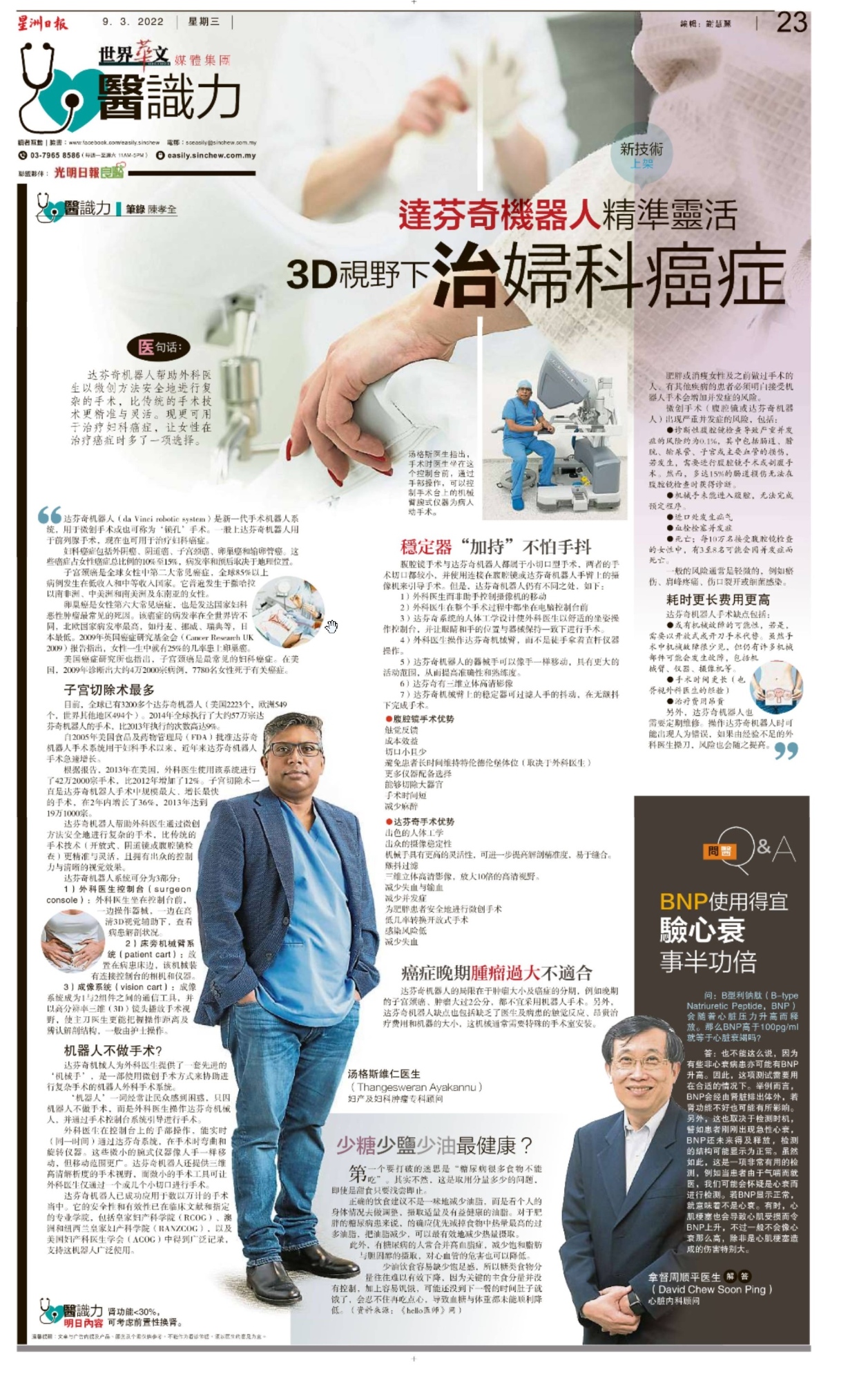Gynaecological Cancers: da Vinci Surgical System for Greater Precision
09 March 2022

The da Vinci robotic system is a new generation of surgical robotic systems for minimally invasive surgery, or key-hole surgery. It helps surgeons to safely perform complex procedures with greater precision and flexibility than traditional surgical techniques.
Typically used for prostate surgery, it can now be used to treat gynaecological cancers, giving women another possibility in cancer treatment. Gynaecological cancers in the vulva, cervix, ovaries and fallopian tubes account for 10% to 15% of all cancers in women.
Cervical cancer is the second most common cancer among women worldwide and the most common cause of death from gynaecological malignancies is ovarian cancer. Women have a 25% chance of developing ovarian cancer in their lifetime according to Cancer Research UK.
Robots don’t perform surgery?
There are currently more than 3,200 da Vinci robots worldwide with approximately 570,000 procedures being performed worldwide in 2014, 9% higher than the number performed in 2013. Hysterectomies have been the largest and fastest growing da Vinci robotic procedure, growing 36% in 2 years to 191,000 in 2013.
The da Vinci robot system is divided into 3 parts:
- Surgeon console: The surgeon sits at the console and operates the instruments while viewing the patient's anatomy with the aid of high-definition 3D vision.
- The patient cart, a bedside robotic arm system, is equipped with a camera and instruments connected to the console.
- The imaging system (vision cart): The imaging system serves as a communication tool between components 1 and 2, and shows the surgical view through a 3D lens, allowing the surgeon to better grasp the operating distance and identify anatomical structures, usually operated by a nurse.
"The term 'robot' often confuses the public as it is thought as the robot is performing the surgery. In fact, da Vinci provides surgeons with an advanced 'robotic hand' which assists in complex operations. Robots do not perform the surgery; surgeons operate the robot through the surgical console system," said Dr Thangesweran Ayakannu, Consultant Obstetrician & Gynaecologist, Gynae-Oncology and Robotic Surgeon at Sunway Medical Centre, Sunway City.
Surgeons operate the robot in real time, bending and rotating the instruments during surgery. The robot’s tiny wrist instruments move like a human hand, but over a wider range of motion. These tiny surgical tools allow surgeons to operate through only one or a few small incisions.
Advantages of da Vinci
- Excellent ergonomics
- Excellent camera stability
- Higher dexterity for further anatomical precision and easy suturing
- Shake filtering
- Three-dimensional, high-definition images with 10x magnification
- Reduced blood loss and transfusion
- Reduced complications
- Safe minimally invasive surgery for bariatric patients
- Low chance of conversion to open surgery
- Low risk of infection
- Reduced blood loss
Source: Sin Chew Daily
Back




